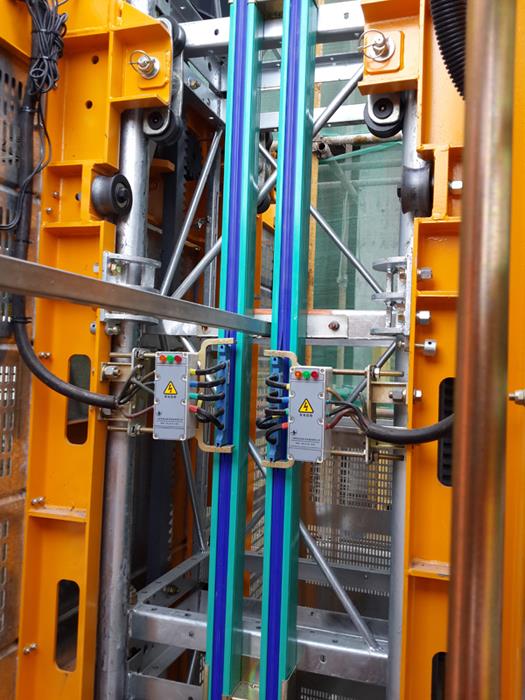


25mm² Sliding Contact Composite Power N Control Line Hoist Cable
-
Payment


-
Origin
China Mainland
-
Minimum Order
1
-
Packing
Pieces
- Contact Now Start Order
- Description
Product Detail
25mm² Sliding Contact Composite Power n Control Line Hoist Cable
Overview
When the construction hoists move up and down, they need power continuously.The conductive conduit installed in parallel along the running track of the hoists and the current collectors on the hoists get the power from the busbar. The sliding contact line is the device that composed of current collector, conductive conduits which hold conductive rails, and relative components.
Features
* Safety: The conduit shell of sliding contact line is made of engineering plastics with high insulation performance. It is wind-proof, rain-proof and snow-proof. The use of the device is not affected by the wind and rain and other bad weather. Its good insulation performance ensures no harm to the maintenance personnel when they touch the contact conduits.
* Reliability: The conductive rails are with excellent conductivity, rapid heat dissipation, low impedance and line loss. The brushes are with high conductivity and high wear resistance. The moving of the current collector is flexible and with good directional performance. The contact arc and the series arc phenomenon are effectively controlled.
* Economy: Sliding contact line device is with low resistivity, low loss, can greatly reduce the loss of electric energy. Its length can be added according to the height of hoist mast, which solves the problems of short service life and easy theft of the common cables.The conductive conduits can be segmented replaced, no need to change the whole cable in the case of local damage.
* Convenience: Sliding Contact Line integrates multistage bus bar in a conduit, easy assembly. Its fixed brackets, connecting clamps and suspension devices, etc. are provided with common components, very easy to assemble/dismantle, commissioning and repair.
Technical Data
Art. No.: | BHFS-5-25D/130 |
| Rated Current | 130A |
| Rated Voltage | 380V / 690V |
| Conduit Dimension | 3016x68x60mm |
| Conduit Weight | 9kg |
| Insulation Resistance | =0.5MO |
| Dielectric Withstanding Voltage | AC 3750V, NO BREAKDOWN AND FLICKERING WITHIN 1 MIN |
| Protection Grade of Shell | IP10 |
| Electrothermal Stability | 20/rated 1s |
| Rated Short-time Withstand Current & Rated Peak Withstand Current | 4.5KA/6.75KA |
| Ambient Features | 1, Heat Resistance Test:Normal Type +55°C |
| 2, Low Temperature Test -30°C | |
| 3, Heat and Humidity Test: Relative Humidity 95%,+25°C | |
| 4, Air Pressure: 86-106KPa | |
| Flame Resistance | Self Extinguishing |
| Parameter of Power Transmission Line | Compliant with National Standard GB3049 <cable conductor> |
| Resistance =0.028Omm2/(+20°C) | |
| Current Collector | Traction Force:F<80N; |
| Traveling Speed:V<100m/min | |
| ELECTRIC BRUSH PARAMETER | Resistance Coefficient:0.1-0.35; |
| Friction Coefficient:0.2 | |
| Contact Voltage Drop:0.3-0.1V; | |
| Abrasion after operating 2000km <0.7mm | |
| Effective Abrasion of Brush:4-6mm; | |
| Effective Working Pressure:1.8-2.3N/cm2 |
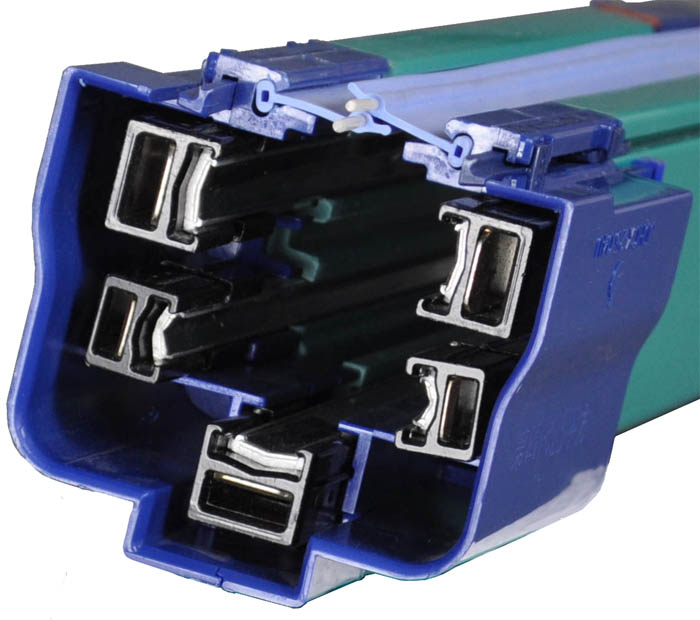
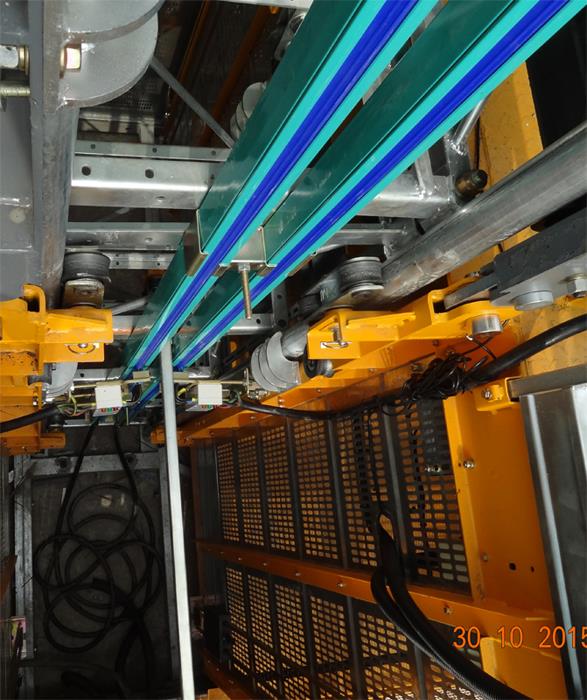
Troubleshooting of Busbar
Phenomenon of Failure | Reasons | Solutions |
Lack of phase, power failure | 1, Bad contact of Conductive Rails joints 2, Too much wear length of Conductive Carbon Brushes 4, Bad contact between Brushes and Conductive Rails, and foreign bodies in Conduits. | 1, Check the contact of Conductive Rail joints, replace joints or Rails. 2, Check the wear of the Collector guide wheels, replace Current Collector or its Guide Wheels and/or Brushes. 4, Clean the Brushes surface and remove the foreign bodies inside Conduits. |
Under voltage occurs at heights irregularly | 1, The distance between the hoist and transformer is too far, and the cable cross section is too small. 2, There is high power appliance at branch cable. | 1, Replace by bigger cross sectional cable. 2, Use the cable specially for the hoist. |
Obvious Conductive Conduits deformation (S shape) causes Collector to be unable to move normally. | 1, The Fastener spacing is too big, or the Fastener is loose. 2, The conduits sliding down. | 1, Shorten the distance between the Conduit Connectors and the Conduit Fasteners, and adjust them. 2, Check the fastening of the Fastener bolts. 3, Add more Anti-drop Suspenders. |
The Conduits shake too much when hoist running. | 1, Straightness of the Conduits is not good. | 1, Correct the verticality of the Conduits. |
Too fast Brush wear. | 1, Conductive Rail joints are not smooth. 3, Bad contact of Brushes and Conductive Rails produces spark burns. | 1, Check and adjust joints of Conductive Rails to make them smooth to ensure the contact area of Brushes and Conductive Rails be 60-90%. 2, Increase quantity of Current Collector. |
Scratch and pits at Brush side. | 1, Bad positioning of the Current Collector so its Guide Wheels wear. 2, The Current Collector cannot move left or right freely so that its side force is big. | 1, Replace Collector or Guide Wheels. 2, Adjust or replace the Collector Guide Device. |
Big noise when the Collector sliding. | 1, The Conductive Rail joints are not smooth. 2, Verticality of Conductive Conduits is not good. 3, The Collector Guide Wheels damage. | 1, Check the contacts of Conductive Rails, make a smooth transition between the two Conductive Rails. 2, Adjust the verticality of Conduits. 3, Replace the Collector guide wheels. |
Easy tripping in rainy days. | 1, There is water in the Junction Box. 2, There are some foreign bodies in the input end of the Conduit at the bottom. 3, Crack of Collector make the water and dust go in. | 1, Drain the water and make more drain holes at the bottom of Junction Box. 2, Clean the foreign bodies, move the cable out of the Conduits. 3, Replace the Collector. |
Easy burn and spark-over at the contact of Brushes and Conductive Rails at the bottom position where the Non-VFD hoists stop. | Starting current of no inverter hoists is larger. | Increase the Collector quantity. |
- Hoist Safety Device 5 Pieces / (Min. Order)
- Builders Pinion Rack Hoist Man Material - MP-B19, B20 L 5 Pieces / (Min. Order)
- Rack Elevator Heavy Load Builders Hoist SC300/300 - MP-B15, B16 L 5 Pieces / (Min. Order)
- Rack And Pinion Construction Elevator Lift - MP-B17, B18 L 1 Pieces / (Min. Order)
- 0-80M VFD Pinion and Rack Outdoor Hoist Lifts with Gear Reducer 1 Pieces / (Min. Order)
- 0-60M/Min High Speed Rack Pinion VFC Control Lift Hoists 1 Pieces / (Min. Order)
- 0-60M 2 ton VFD Rack Temporary Construction Elevators Hoist Lift 1 Pieces / (Min. Order)
- 0-46m SC200200 Rack Pinion Builder Temporary Elevator Hoist Lift 1 Pieces / (Min. Order)
- 0-34m Gear Rack Building Material Hoist Lifts 1 Pieces / (Min. Order)
- 0-54m 1 ton Outdoor Rack Pinion Construction Hoist Elevator Lift 1 Pieces / (Min. Order)

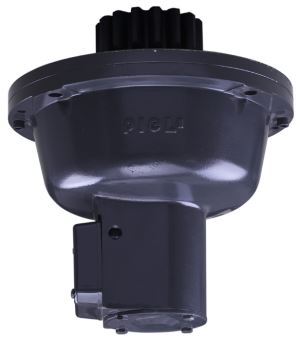
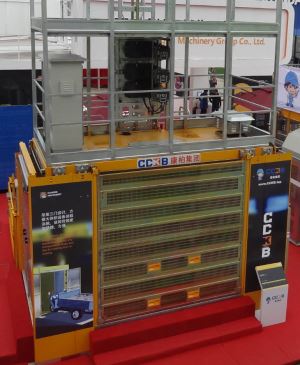
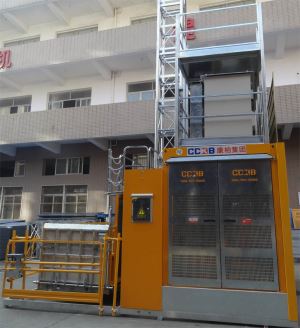
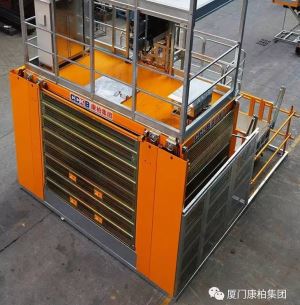
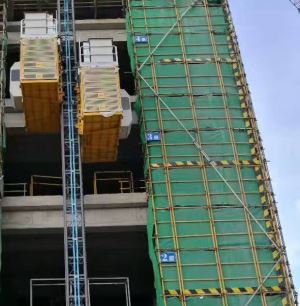
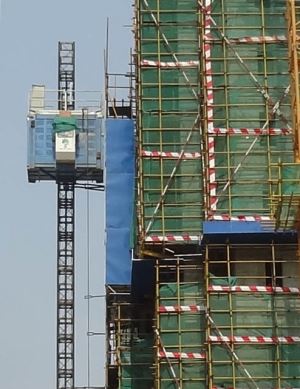

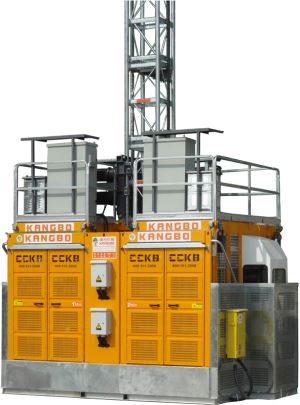
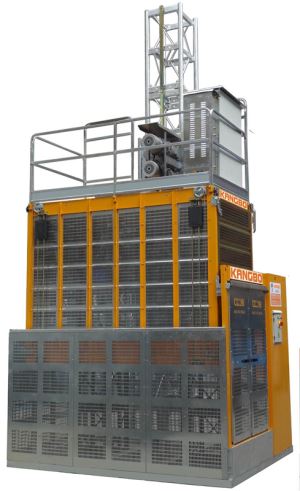
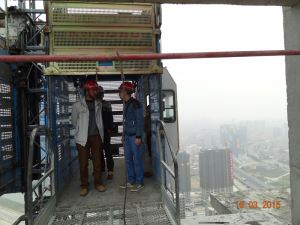
 Favorites
Favorites
